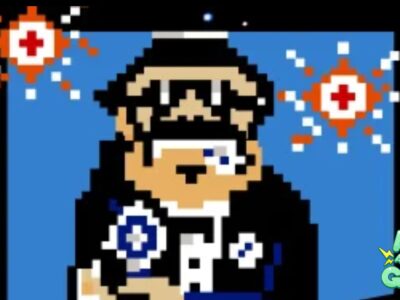
[ad_1]

The Valdosta Daily Times wrote a short puff piece about the 90s history of Lobo, the alien bounty hunter with the crude dialogue originally seen in Omega Men’s 3rd issue in the mid-80s, who underwent certain retcons at the dawn of the 90s, all so he could allegedly serve as a “perfect” metaphor, but only became one of the biggest problems of the decade, certainly based on the approach:
“Lobo” was one of the most violent mainstream comic books of the 1990s.
The shaggy-haired, space biker, bounty hunter was intended as a comical indictment of the violence in popular comic books of the late 1980s and early 1990s: The Punisher, Wolverine, etc., according to Keith Giffen, the character’s creator. But instead of serving as a warning against such violence, fans made Lobo the “main man” of comic book violence.
Lobo violence is presented in an over-the-top manner – think of a Looney Tunes cartoon with gore.
I think the supposedly humorous presentation was exactly the error. How is it not possible to criticize violence from a serious perspective? Surely humor isn’t a way to take the seriousness out of the subject if you really think it’s troubling? Yet that’s exactly what those writing Lobo during that decade did, and that’s decidedly why it all aged very poorly. Mainly because:
In one of the earliest solo storylines, Lobo is held to a promise to bring back his former school teacher alive. Other than Lobo, she happens to be the last Czarnian – the people of Lobo’s home world – a population he obliterated.
As violent as Lobo is, if he gives his word, he keeps it.
But that’s no excuse for such a repulsive premise. All this coming around the time that such mass slaughter premises were becoming alarmingly commonplace, and ruined superhero fare in the long run. At least the columnist seems to admit the humor path doesn’t hold up:
In his earliest appearances in the DC Universe, LEGION, Superman, the Justice League, etc., kept a tight check on Lobo. But with his solo outings, he became increasingly violent and uncontrollable.
In “Lobo’s Back,” he is killed then forces heaven to reincarnate him so he can return and mete vengeance upon his killer. He’s first sent back as a female version of himself to the Blitz in 1940 England. Then, he works his way back to heaven until it reincarnates him to his usual self so he can exact his revenge.
Lobo had a few miniseries and special editions before DC gave him his own title for several years in the 1990s.
Revisiting the earliest issues some 30 years later, they are interesting but the humor has paled through the decades … though that is partly a change in the times, it is also a sign that this reader is 30 years older.

Well I’m glad somebody at least half admits the US entertainment industry’s obsessions with violence are easily its biggest problem, and that’s what the Lobo material of the 90s built on. Have times changed though? Not by a longshot, if you consider all the violent mainstream video games and comics that are still produced (the sequel to The Last of Us was easily one of the worst examples). The idea of turning Lobo into a female version of himself is not amusing either. I think this article centers on a paperback collection first released 3 years back that may currently be out of print, and from what I can tell, doesn’t seem to have any trace of Lobo’s original debut in 1983, in the pages of the original Omega Men series. Well, what good is that? I’d rather read the pre-Crisis intro, where Lobo may have actually been presented more as a villain. This new take from the post-Crisis era was little more than an insult to the intellect.
Originally published here.
[ad_2]





